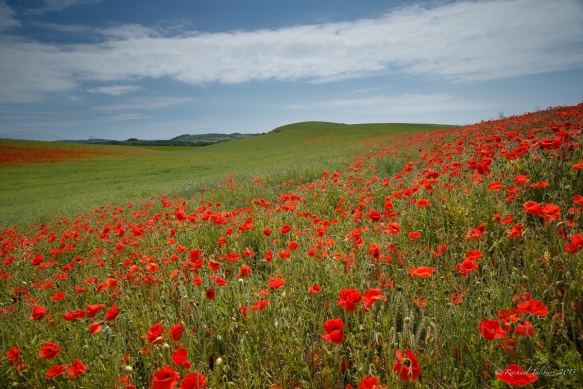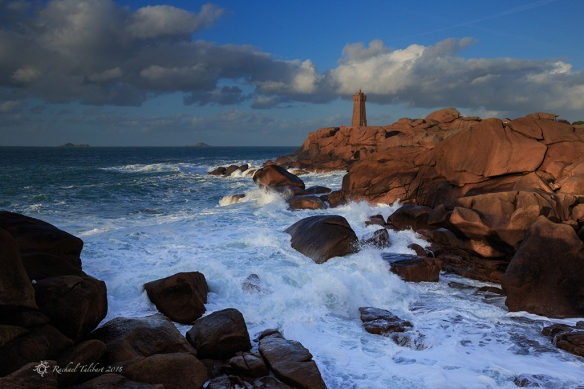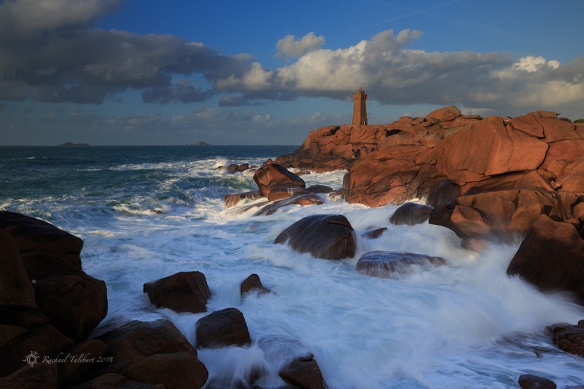
For the last three years, June/July has seen me out searching for that ephemeral wonder, the wild poppy field. This year, together with my photo-buddy Jenifer Bunnett, I went out looking for poppies on four separate occasions. Out first safari was disappointing; we found poppies galore but couldn’t get close to them thanks to some determined fencing. The second was much more successful, thanks to a generous tip from another photographer, Malcolm Oakley, on Twitter. Much hiking and a pair of binoculars were needed but we found them, in three patches, against the flank of Black Patch Hill near Storrington in the South Downs National Park. We were able to return a few days later for some gentler evening light.
Much hiking and a pair of binoculars were needed but we found them, in three patches, against the flank of Black Patch Hill near Storrington in the South Downs National Park. We were able to return a few days later for some gentler evening light. Poppy season is now mostly over down here in the South. Poppies do not reliably flower in the same place year after year. Their seeds need rough handling to germinate but then the ground must be left fallow to allow them to bloom, although they do well at the edges of rape fields where the rape seed has not taken hold (or it has been eaten by birds). But not knowing where they’ll be next year is all part of the adventure, and their ephemerality only adds to their allure.
Poppy season is now mostly over down here in the South. Poppies do not reliably flower in the same place year after year. Their seeds need rough handling to germinate but then the ground must be left fallow to allow them to bloom, although they do well at the edges of rape fields where the rape seed has not taken hold (or it has been eaten by birds). But not knowing where they’ll be next year is all part of the adventure, and their ephemerality only adds to their allure. If you fancy joining the poppy hunt next year, there is now a group on Facebook dedicated to sharing locations for poppies and other seasonal wildflower displays: Poppy and Flower Site Finder 2015.
If you fancy joining the poppy hunt next year, there is now a group on Facebook dedicated to sharing locations for poppies and other seasonal wildflower displays: Poppy and Flower Site Finder 2015.
Category Archives: photography
Tempest
Creativity with bluebells
I have spent much of the last two weeks out and about in our local landscape capturing images of bluebells. Nearly 50% of the world’s bluebells (Hyacinthoides non-scripta) grow in the UK. Every Spring, for about two weeks, ancient woodlands are carpeted in nodding azure bells. If the Japanese go out in droves to appreciate cherry blossom, we Brits do the same for bluebells.
Of course, they are irresistible to the landscape photographer. But capturing pleasing photos of bluebells is harder than you might think. The temptation is to go wide, to capture all the majesty of the forest, but this tends to exaggerate the distance between the flowers, minimising the profusion that attracted your eye in the first place. So a longer focal length, that compresses distance, is often the better solution.
Finding a strong composition can be challenging. Paths, the more winding the better, create shapes that led the eye into and through the frame.
Colour balance is also tricky. I often see comments on-line that either praise or criticise bluebell pictures for the way they reproduce the colour of the flowers: ‘nice to see proper blues” is typical. But bluebells actually look different depending on the light.
In sunlight or at certain times of day (golden hour, for example) they take on a mauve/magenta tint. Pre-dawn or in shade, they appear more blue. Equally, the fresh spring leaves of the trees under which the bluebells grow, especially beech, have a strong, almost acid-green colour, that can look over-done to people who have never properly looked at the real thing.
It’s always a good idea to try different apertures. Landscapers tend to favour narrow apertures to achieve ‘front-to-back’ sharpness. But, sometimes, using a wide aperture to narrow your depth of field can provide a more pleasing image, just picking out a detail and allowing the rest of the scene to become a blur.
Speaking of blur, on breezy days it’s worth experimenting with shutter speed to capture some movement in the flowers or the leaves of the trees.
In a wide view, it creates a subtle. dreamy feel. Closer up, more abstract images can be made.
There are other ways to record movement. Intentional camera movement, or “ICM”, is very on-trend at the moment. Put simply, the camera is moved while the shutter is open. The result, when it works, is a painterly, semi-abstract rendering of the subject. The technique suits woodland because it tends to simplify, which can be helpful in cluttered forest scenes.
One must be prepared for a lot of out-takes when using ICM, but it’s all fun and in the spirit of experimentation. I find that it helps to choose scenes where there are bold shapes, like tree trunks, to give your image structure. Without them, ICM images can become a formless jumble. I also like images where there are still some recognisable details within the blur, as in these extracts from the above image, where an oak leaf can be recognised…
… and, below, where the frill from a single bloom emerges (bottom right) from the blue haze.
Equally in vogue, making multiple-exposures in-camera can have unexpected and pleasing results. Many modern digital cameras make this simple. I used my Fuji X-E1 for the shot below. The image on which you are going to superimpose a second shot is shown in live view under the picture you are now taking, enabling you to visualise exactly what you are going to achieve. This image features stitchwort, tiny white flowers I found growing among the bluebells at a local copse on Tuesday.
Bluebell season is mostly over now, but it will surely return to delight us all again next Spring. I think it’s lovely that the Japanese have a word for their national cherry-blossom gazing, ‘hanami’. Perhaps we need to invent one for bluebells. Any suggestions?
Memories and missing pictures
This is a first from me – a blog post without pictures. But there’s a reason; read on.
I’ve had a break from blogging; March and April saw me travelling extensively, with trips to Brittany, the Lofoten Islands, Venice and Norfolk. Time at my desk between trips was for catching up with all the admin I hadn’t done while away. But, this morning, I decided it was time to resume my much-neglected 365 redux project. So I booted up my Mac and hunted for a shot from 15th May. To my surprise, I found that in the last five years (as far back as my current Lightroom catalogue goes) I hadn’t taken a single photo on 15th May. I wondered why that might be. May is such a pretty month – surely a landscape and bug shooter would have found reason to go out shooting on the 15th at least once?
15th May was my mother’s birthday. Perhaps I was busy with family on that day, but surely I ought to have taken some family snaps then? Well no, and that brings me to the point of this post. My mother hated having her photo taken. The pictures I have of her are from her youth, pictures of a mother I never knew. Beautiful and young, but not my mum. I have very few pictures from the later decades of her life, when she was the person I knew and loved. And this made me think. I too hate being photographed; perhaps it’s a photographer’s curse? I know I much prefer being behind the lens. But there is more to it; I must confess to the vanity of not wanting my ageing face to be recorded for posterity. Canute-like, I want to command the years to retreat even if the only thing I can actually control is the production of images of myself.
This is the first 15th May since my mother passed away. And I wish I had more pictures of her. I would like to share them with my own daughter and to remember the grandmother she loved. She looks at the old pictures of her youthful grandmother with admiration, but not with recognition. I can’t do anything about that – it’s too late. But I can make sure that when I am gone my daughter has pictures of the mother she knew. I will just have to put vanity aside and let the shutter click.
Bleak winter
Aurora over Lofoten

I am just back from an exciting trip to the Lofoten Islands, where we were lucky enough to see the Northern Lights on two evenings. Before I went, I was ambivalent about seeing aurora. There are so many pictures of them on the internet these days, and I had seen them before, in Canada decades ago. My purpose in going to Norway was, rather, to capture the beautiful, snow-covered landscape.
However, when green ribbons ripped across the sky that first night on Skagsanden beach, I was as excited as anyone. I was unprepared for the raw power of the spectacle, and for how fast the lights can move. Shutter speeds as fast as 1.3″ were required and even then the lights were occasionally burnt out. It seems incredible that all this drama is silent, apart from whoops of exhilaration from onlookers. I fear photographing aurora may be addictive.

Three from Thurne
During my trip to Norfolk last month, I had the chance to spend a large part of one day at Thurne wind pump. I took many of the usual, landscape type shots but I also enjoyed the chance to use my long lens and capture some graphic black and white details.
My photographic eye tends to veer automatically to the large vistas but I want to start catching more intimate aspects of the landscapes I visit too. It’s a new project for 2015.
Do you think your eye tends to favour one sort of composition to the detriment of others and is there another you’d particularly like to master too?
Fun with sea and filters
The good folk at Wex Photographic have asked me to write a post about how I use filters to achieve different shutter speeds using images from my recent trip to Brittany. Regular readers may remember I did a piece about this last month and promised a second instalment, so this is it. Today, I will talk a little more about the equipment I use. Almost every image in this post was taken using my Canon 5D mark iii and Canon’s 16-35mm f2.8 L lens, a Manfrotto tripod and ball head, and timer remote switch RST-7002 (the only exception is the one from Norfolk, where I used Canon’s 70-200mm f2.8 IS lens).
The first few images in this post were taken on the same occasion, with the same composition, only a few minutes, or even seconds apart. They show the effect of different shutter speeds on breaking waves. The light was very dynamic that evening, with the sun going in and out of patchy clouds, so I had to adapt my ISO and aperture to achieve the shutter speeds I wanted without constantly having to change filters.
I use the LEE 100mm wide-angle filter system. As you can see from the image captions, most of these shots were taken using the 0.6 (2-stop) hard ND (neutral density) graduated filter. This enabled me to balance the exposure by darkening the sky, thus bringing out the foreground that for a lot of the time was in shadow. I have noticed on my workshops that people tend to be anxious about using a hard grad for fear that the line between dark and light will be too obvious. However, on the standard hard grad the transition still has a small band of gradation, allowing for a little ‘wiggle room’ in its placing, and I use this grad for 90% of my landscape work. When shooting in woodland, however, I tend to use my 0.9 (3-stop) soft grad.
To lengthen the exposure time for the whole image (i.e. without gradation), I have three go-to ND filters, the 10-stop ‘Big Stopper”, the 6-stop “Little Stopper” and a 3-stop “pro-glass”. Lee introduced the Little Stopper last year and I find that I now use it for most of my long exposure work, only using its bigger brother for very long exposures or very bright conditions.
A third, but invaluable, filter is the circular polariser. Strangely, despite all the advancements in digital imaging and developing, I don’t think it is yet possible fully to replicate the effect of a polariser in post-production. It can be used to boost colours, reduce or boost reflections and define a blue sky. (It also adds up to two stops to your exposure time.) The visual impact is strongest when used at right angles to the sun but it can still have an effect at other angles. However, a polariser should be used with caution on a very wide angled lens when it can add a patchy look to the sky. The Lee polariser sits in front of the filters on a special ring adapted to screw onto the filter holder. Be sure, if you are going to use it on a wide lens, to buy the ultra slim polariser. Lee only introduced it recently. When I first invested in the system, I made the mistake of buying their standard 105mm only to find it vignetted horribly on my wide lens, forcing me to invest the same money all over again in Heliopan’s ultra slim equivalent.
As you can see from the images, even quite small adjustments in shutter speed affect the appearance of moving water. I like speeds of between 1/5 and 0.8″ as they introduce a pleasing sense of movement without smoothing the water completely. I find 1/5, or thereabouts, is particularly good for catching the way water seems to scatter and fragment in clashes or peaks of waves, as in the shot below, taken on a different occasion, on the Norfolk coast.
Not every shot has to be a long exposure, of course. In the image below, I liked the effect of the sunset light on the water and wanted to capture more texture.
However, sometimes the serenity of a longer exposure is more pleasing, as in the image below, taken during a subtle dawn at the same location the next day.
If you are thinking of investing in some filters, Wex are kindly offering readers of this blog a discount. Details as follows:
10% off LEE Filters
Start Date: 17/03/2015
End Date: 17/04/2015
Code: SC10LF
Link: http://www.wexphotographic.com/square-or-rectangular-filters-lee-filters/b3073-m144.
T&Cs: http://www.wexphotographic.com/?/popups/terms-promo-leefilters-17032015.html
A turbulent evening
During the first couple of days of my trip photographing lighthouses in Brittany earlier this month, we had some nicely changeable weather. The wind was so strong at this lighthouse, it was hard to keep the camera and tripod still enough. Black and white seemed to suit this two-toned structure.
Dawn the next day, and it was still just as windy but the sky was serene, heralding more peaceful weather ahead. A long exposure in colour seemed the way to go. I love going back to locations and capturing their different moods.
* * * * *
Still catching up with my 365 redux backlog. 365/66, 68 and 69 are from 2009, the year of my original, and more conventional, project 365. It’s handy to have that project to rely on when I hit a patch where I haven’t taken pictures in other years. True to my pledge, I have re-edited these. 67 is from last year, a shot previously unshared of a midge on a pieris shrub in my garden. I am enjoying seeing how my images have improved (to my eye, anyway) in the 7 years since I switched to digital, and became obsessed.
365 Backlog
Starting to catch up with my backlog of 365 redux images before a different sort of post tomorrow. 365/60 is from 2010, 61and 62 are from 2009 and 63 is from 2014. 365/64 is also from last year. According to the traditional song, seven magpies is ‘for a secret never to be told’, but what about 24? Finally, 365/65 is also from 2014, an image hitherto unprocessed from my day out shooting street images with Damian Demolder and Amateur Photographer magazine. If you want to know more about my 365 redux project, see here.







































